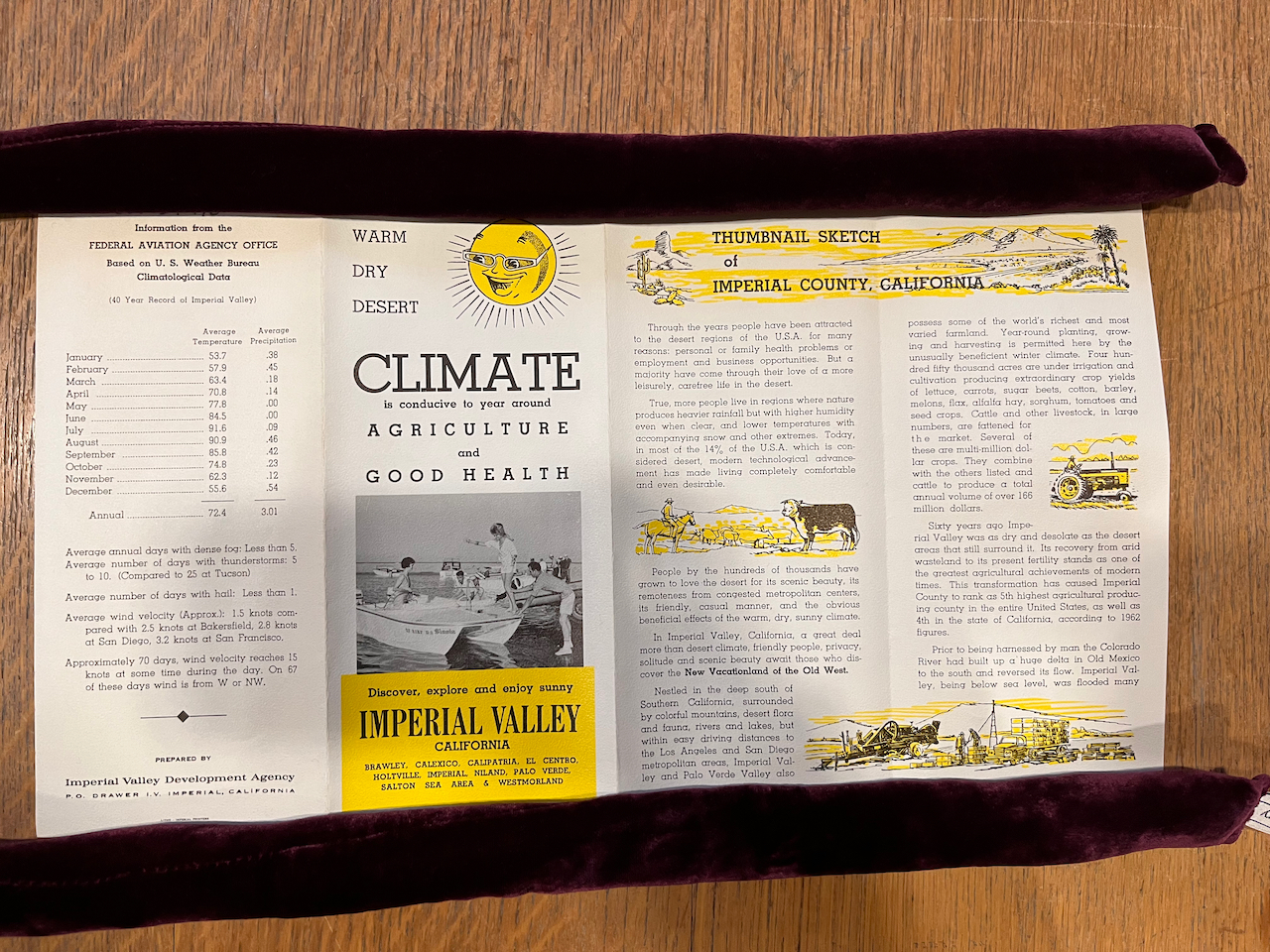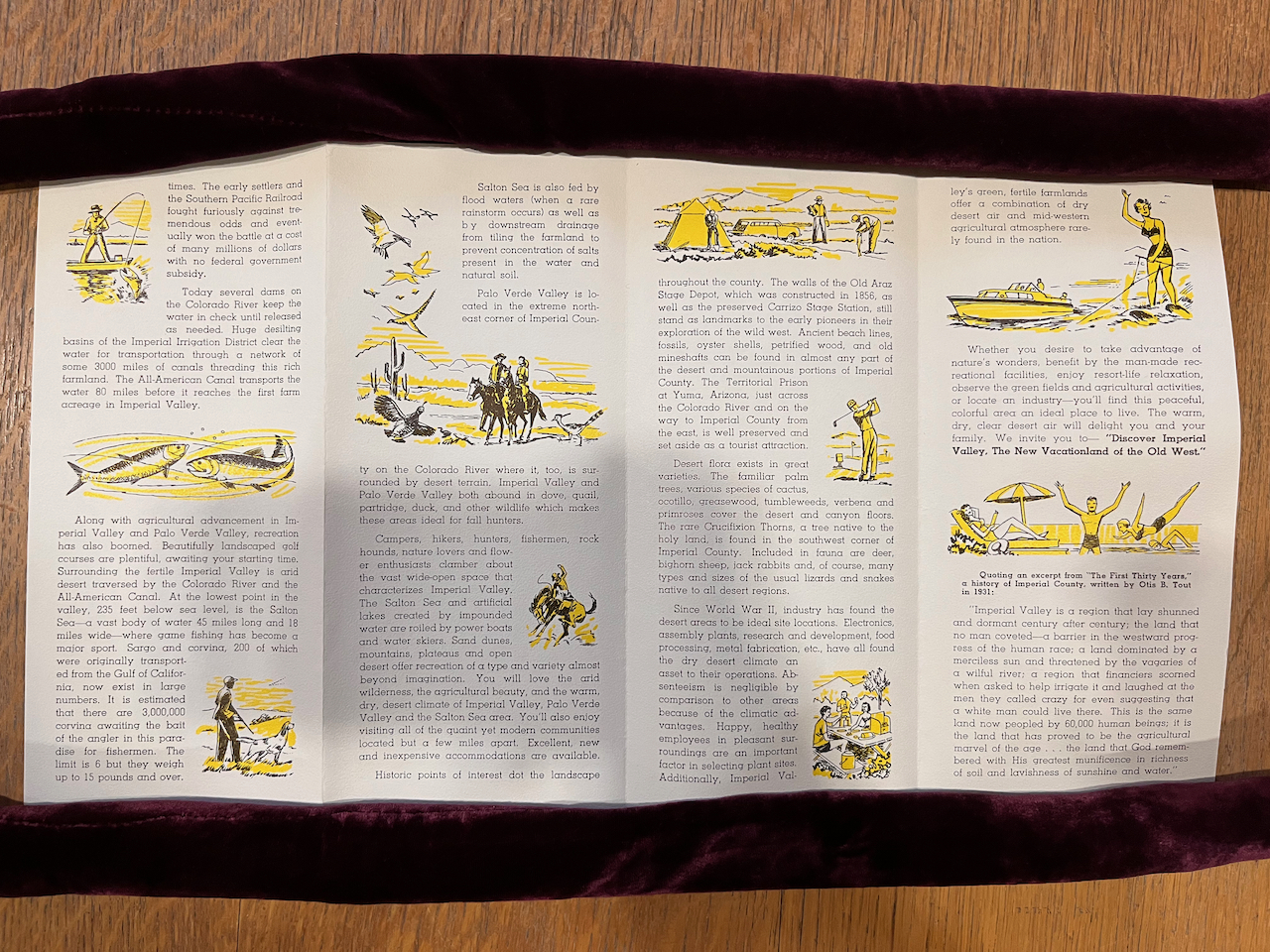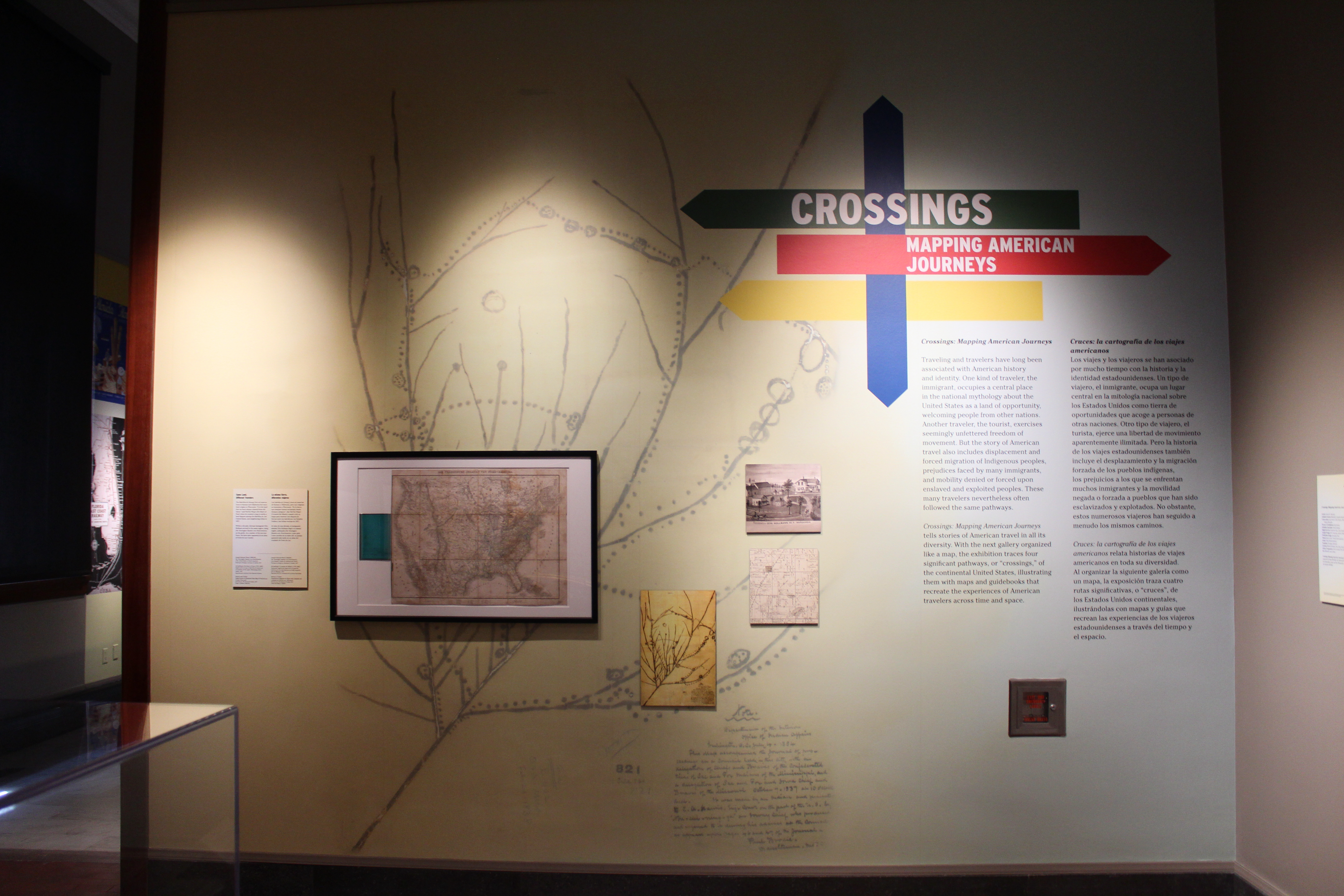Dr Elizabeth Chant
In March-April 2022 I was able to spend three weeks at the Newberry working closely with the Library’s unparalleled ‘Road Maps and Travel Ephemera’ Collection. I was consulting these documents as part of my new research project, ‘Touring the Anthropocene: Modernity and Dark Tourist Ecologies in the Americas’, which seeks to examine domestic tourism to industrial sites in former frontier territories in the U.S., Argentina, and Chile in the first half of the twentieth century. I am especially interested in how domestic tourism was promoted across all three countries as a patriotic duty, and the role played by visits to extractive sites in cementing a sense of national identity that foregrounded technological modernity and economic prowess.
My primary sources for this project are travel ephemera, and so this time at the Newberry allowed me to consult unique examples of maps, pamphlets, flyers, guidebooks and posters from the early twentieth century United States. The ‘Road Maps and Travel Ephemera’ collection is extremely vast; reviewing a range of materials has enabled me to narrow my focus as I further develop this project by developing case studies of visits to industrial sites in California and Alaska. I have been able to build a corpus of ephemera that includes early twentieth-century pamphlets detailing the lignite industry in Amador County, CA, and Alaskan guidebooks that highlight the importance of visiting the State’s gold mines.
A particular highlight was a c.1960s pamphlet promoting California’s Imperial Valley, an important farming area, as a site for both vacations and relocation. This item highlights that the area’s dry desert climate is conducive to good health, in contrast with enduring perceptions of deserts as barren and inhospitable. The Salton Sea as emphasised as one of the area’s main attractions; this body of water was formed in 1905 when an irrigation canal which helped to make the land fertile was breached and has come to be understood as one of the worst ecological disasters in the history of California; the water is highly saline and has been further contaminated by pesticide-ridden runoff water from nearby farms, causing massive die-offs of fish and birds and the proliferation of algal blooms in recent decades. The parts of the lakebed that have dried since the late 1990s are so toxic that the dust blown off them has caused a significant increase in the rates of respiratory problems in the Imperial Valley. Seeing the area framed in the mid-century as a beacon of fertility and health due to the emergence of a man-made water source therefore exposes the noxious consequences of mass agriculture and industrialisation. I used this item to lead a session of the Institute of Modern Language Research’s ‘Languages and Environments Reading Group’ in late April 2022 and look forward to using it alongside studies I am developing of visits to mineral mines in the Imperial Valley.
I was particularly lucky to be able to work closely with Professor James R. Akerman, Director of the Hermon Dunlap Smith Center for the History of Cartography during my time at the Newberry. Professor Akerman introduced me to the Library’s collection of road maps produced by oil companies not only of the U.S. but also of Latin America, which I am using as part of an article I am currently developing on oil tourism in 1920s Argentina. I am additionally working on an article for the Smith Center’s publication, Mapline, detalining my findings from the Newberry Collections, as well as a review for the H-Maps listserv of the exhibition currently on display at the Library curated by Professor Akerman, ‘Crossings: Mapping American Journeys’, which examines historical routes experiences of travel across the continental U.S.
I am extremely grateful to the Warwick Humanities Research Centre and Centre for the Study of the Renaissance for supporting this research trip, and to Jim, and ‘Crossings’ Assistant Curators Madeline Crispell and Gabrielle Guillerm for their assistance while I was in Chicago. It was a real privilege to be handling collection materials again after so long and I greatly look forward to comparing these U.S. examples with documentation from Latin America as I advance this project further.
c.1960s pamphlet promoting the Imperial Valley


Entrance to the ‘Crossings: Mapping American Journeys’ exhibition

